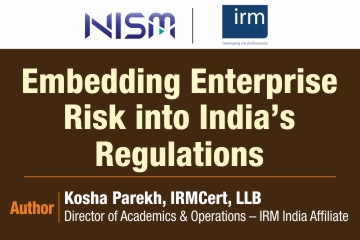
In any functioning debt market, Credit Rating Agencies (CRAs) play a critical role in bridging the gap between issuers, regulators, merchant bankers and investors. Rating agencies play a vital role in boosting the bond market by providing an independent and credible assessment of an Issuer’s creditworthiness. These ratings help reduce information asymmetry, enabling investors to make informed decisions and better manage risk. High-quality ratings of instruments / securities attract a wider pool of investors, thereby improving liquidity and market depth. They also assist in pricing bonds appropriately based on risk, which supports efficient capital allocation. Ultimately, by enhancing transparency and investor confidence, CRAs are supposed to contribute towards the growth and stability of the bond market.
In India, however, a series of bond defaults has exposed structural weaknesses in the credit rating ecosystem. Recent incidents, most notably the TruCap Finance default on structured market-linked debentures, have highlighted the issue with rating of debt instruments. Since 2016, India has witnessed several high-profile rating defaults, including IL&FS, DHFL, and Reliance Capital, exposing gaps in credit rating practices. These defaults shook investor confidence and highlighted concerns around rating timeliness and independence. Regulatory tightening followed, with SEBI mandating enhanced disclosures. Despite reforms, the need for more proactive, independent, unbiased, timely, objective and transparent ratings remains critical.
As India seeks to deepen its bond market, both in scale and sophistication, strengthening the credit rating framework is critical. Valuable lessons can be drawn from international reforms, especially in the U.S., EU, and China, regions that overhauled their CRA oversight following crises of their own.
Some Key Challenges faced by Indian CRAs
Despite their integral position in the market, Indian credit rating agencies have faced manifold challenges, mainly due to the following:
Global Experiences in CRA Reform
United States: The Dodd-Frank Era
The 2008 subprime mortgage crisis exposed how leading CRAs gave ratings to complex, risky financial instruments that ultimately resulted in default. In response, the Dodd-Frank Wall Street Reform and Consumer Protection Act was introduced to provide for the following:
European Union: Centralized Oversight by ESMA
The European Securities and Markets Authority (ESMA) was given direct supervisory powers over CRAs. Reforms included:
China: Enforcement and Data Integration
China has approached CRA reform with a focus on enforcement and integration of market data. Key steps include:
What India Can Learn: Consolidated Lessons from Global Reforms
Drawing from these international reforms, India can consider a series of concrete changes to strengthen the functioning of its credit rating agencies:
Establish a Dedicated Oversight Unit
Just as the U.S. created the Office of Credit Ratings under the SEC, SEBI could consider the establishment of a specialized CRA supervisory cell. This unit should:
Mandate Real-Time and Event-Based Monitoring
Indian CRAs should move away from periodic reviews and move towards dynamic, event-triggered surveillance. Ratings must incorporate:
Improve Methodology Transparency
CRAs must be required to:
The IOSCO Code of Conduct Fundamentals for Credit Rating Agencies (the “IOSCO CRA Code”) is intended to offer a set of robust, practical measures as a guide to and a framework for CRAs with respect to protecting the integrity of the rating process, ensuring that investors and issuers are treated fairly, and safeguarding confidential material information. Globally, regulators are using the IOSCO CRA Code as the benchmark for registration and oversight programs related to CRAs. Regulators the world over are also looking at ways and means to address the basic issue of ‘Conflict of interest’ associated with the ‘Issuer pays’ model where lines often get blurred between Analyst divisions and Business development functions of CRAs.
India’s ambitions of building a vibrant, globally competitive bond market depend critically on investor confidence and that confidence is deeply tied to the credibility of credit ratings. Recent defaults, like that of TruCap, have shown that without meaningful reform, the current CRA framework risks falling behind the needs of a more dynamic, retail-inclusive debt market.
India doesn’t need to reinvent the wheel. The U.S., EU, and China have all faced similar crises and responded with regulatory clarity, stronger enforcement, and technological integration. These global models offer a clear path forward.
The time is right for a rating reset, where Indian CRAs transform from being reactive scorekeepers to independent, forward-looking sentinels of credit risk – and also looking at other risks which in turn impact the credit rating of instruments. With stronger oversight, better transparency, and smarter monitoring tools, Credit ratings can once again serve their true purpose – protecting investors and strengthening the integrity of financial markets.
Author:
CMA Suresh Narayan, Adjunct Faculty NISM

When people hear the term “risk management,” they often associate it with financial markets, insurance, or corporate governance. In…

As India charts its course towards Viksit Bharat, by 2047, the sophistication and depth of its financial markets are paramount.…

As investors, we often judge performance on monthly (MoM), Quarterly (QoQ) and year-on-year (YoY) statistics. It feels natural to look…
© 2025 National Institute of Securities Markets (NISM). All rights reserved.